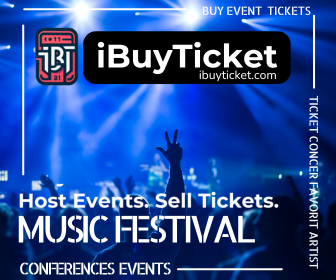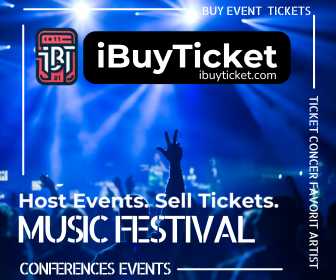How to Do Digital Marketing for a New Business: A Beginner’s Guide to Every Major Channel


Starting a new business is exhilarating, but getting people to find your business? That’s where digital marketing comes in. If you’ve got the product, service, or idea, digital marketing is the engine that gets it in front of the right audience, builds trust, and drives sales. And when you’re just starting out, choosing the right mix of channels can make all the difference.
Here’s a practical breakdown of how to do digital marketing for your new business, with a walkthrough of the core channels every entrepreneur should consider—plus some hard-earned tips to avoid costly mistakes along the way.
1. Start with Your Strategy
Before diving into any specific channels, take time to get your strategy straight. Ask yourself who your ideal customer is, where they spend time online, and how your offer fits into their lives. A focused strategy helps you avoid wasting money on platforms that don’t align with your goals. It also ensures you craft messaging that speaks directly to the pain points and aspirations of your audience.
Start small and focused, then expand once you see traction. Maximizing ROI begins with prioritizing high-impact efforts and setting clear KPIs to track them.
Ask yourself:
- Who is your target audience?
- What problems are you solving for them?
- What is your brand voice and unique value proposition?
- What are your business goals (awareness, sales, leads, etc.)?
Your answers to these questions will help you determine which marketing channels deserve your time, budget, and energy. No two businesses are the same, and your digital marketing mix should reflect that.
2. Search Engine Optimization (SEO)
Let’s start with the foundation: SEO.
Search Engine Optimization helps your website show up on Google when someone types in keywords related to your business. To maximize ROI from SEO, target keywords with commercial intent (e.g., “best plumber in San Diego”) that indicate someone is ready to take action. Regularly updating your site with fresh, helpful content also signals to Google that your site is active and relevant.
Optimize for local SEO if you serve a specific area—this includes your Google Business Profile, business directories, and customer reviews. Track rankings, conversions, and traffic trends monthly to understand which efforts are moving the needle and which to phase out. Good SEO means people find you instead of your competitor.
Key components of SEO include:
- On-page SEO: optimizing your website content, meta descriptions, page titles, and URLs.
- Technical SEO: making sure your website loads fast, works on mobile, and has a clear site structure.
- Content creation: regularly publishing useful, keyword-rich blog posts or landing pages.
- Link building: earning backlinks from reputable websites to boost authority.
SEO is a long game, but it pays off with sustained traffic over time.
 Pro tip: Many small business owners make simple but critical SEO mistakes, like targeting the wrong keywords or using duplicate content. This guide breaks down the most common SEO missteps—and how to fix them.
Pro tip: Many small business owners make simple but critical SEO mistakes, like targeting the wrong keywords or using duplicate content. This guide breaks down the most common SEO missteps—and how to fix them.
If SEO feels overwhelming (and it often does), don’t go it alone. Local specialists like Sandy Eggo SEO help small business owners build search visibility without the guesswork. From technical audits to Google Maps optimization, they get results that grow your bottom line.
3. Content Marketing
Content is the fuel for many of your marketing efforts, especially SEO, email marketing, and social media. To get the most ROI, repurpose each piece of content across platforms—turn blog posts into Instagram carousels, videos into reels, and guides into lead magnets.
Choose topics based on keyword research and actual customer questions to ensure your content drives both traffic and conversions. Always include a clear next step (like a call-to-action or lead capture form) to convert readers into subscribers or customers. Over time, a strong content library builds authority, ranks in search engines, and continuously drives traffic with no additional spend.
Think of content as anything you create to inform, inspire, or educate your audience.
Effective content formats include:
- Blog posts
- How-to guides
- Case studies
- Videos and reels
- Infographics
- Ebooks and whitepapers
The best content solves real problems. Instead of pushing your product 24/7, focus on helping people—then naturally tie your offer into the solution. For example, if you sell natural skincare, create content on “How to Fix Dry Skin Without Harsh Chemicals.”
4. Social Media Marketing
Social media gives your brand a human voice—and a chance to build a community. But ROI only comes when you move beyond vanity metrics like likes and focus on engagement and conversions. Use social media to share behind-the-scenes content, tell your brand story, and highlight customer success.
Consider running low-budget tests with paid ads to find what resonates before scaling. Tools like Meta Pixel and Instagram Insights help track real performance, so you can double down on what’s working and stop what’s not.
Whether you’re B2B or B2C, people want to connect with brands that feel real and relatable.
Top platforms to consider:
- Instagram & TikTok: Great for visual brands, lifestyle products, and local businesses.
- Facebook: Still strong for local reach and events.
- LinkedIn: Ideal for B2B and professional services.
- X (formerly Twitter): Works well for news, tech, and thought leadership.
Social media works best when you focus on 1–2 platforms, post consistently, and engage with your audience. Don’t just broadcast—listen, respond, and add value.
5. Email Marketing
Email isn’t dead. In fact, it’s one of the highest-ROI channels out there. Why? Because you own your email list, unlike social media, where algorithms change constantly.
To make the most of it, segment your audience based on behavior, like past purchases or engagement, and send personalized content. Set up automated email sequences (welcome series, abandoned cart reminders, win-back campaigns) to nurture leads without extra effort. Keep your email list healthy by cleaning out inactive subscribers and testing subject lines to improve open rates. Every email you send should have one clear goal, whether it’s clicks, conversions, or replies.
Start building your list from day one with opt-ins like:
- Discount codes
- Free downloads
- Newsletter subscriptions
Use email to:
- Nurture leads with helpful content
- Promote new products or services
- Send exclusive offers to loyal customers
Platforms like Mailchimp, ConvertKit, and Klaviyo make it easy to automate campaigns and segment your audience for better results.
6. Pay-Per-Click (PPC) Advertising
Need traffic fast? PPC can be a great way to jumpstart visibility, especially while you wait for your SEO to kick in. Start with bottom-of-funnel campaigns targeting high-intent keywords or retargeting website visitors. Use A/B testing on headlines, ad copy, and landing pages to improve your click-through and conversion rates. Set clear budgets and bid strategies to avoid overspending, and monitor your cost-per-acquisition (CPA) closely. The goal is to dial in a repeatable ad formula that brings in more revenue than it costs.
Popular PPC channels include:
- Google Ads: Appear at the top of search results for your target keywords.
- Facebook & Instagram Ads: Excellent targeting options based on demographics, interests, and behavior.
- LinkedIn Ads: Costlier, but powerful for B2B lead generation.
Start with a small, testable budget and experiment. Track performance closely and adjust based on cost-per-click (CPC) and return on ad spend (ROAS).
7. Local Marketing and Google Business Profile
If your business serves a local area (think salons, law firms, coffee shops, etc.), local marketing is essential. Start by claiming and optimizing your Google Business Profile with accurate info, photos, service details, and regular posts. This is what appears in the Maps results and local pack when people search for services like “pizza near me” or “best SEO in San Diego.”
Local search drives high-converting traffic—people searching “near me” are often ready to act. Encourage happy customers to leave reviews, and respond to every one—Google rewards engagement. For ROI, track how many leads or sales come from local search and refine your listings and local citations accordingly.
Encourage happy customers to leave reviews, keep your hours and contact info updated, and post regularly on your profile.
8. Affiliate and Influencer Marketing
Affiliate and influencer marketing can add fuel to your growth once you’ve got a product that people love. To boost ROI, look for partners who genuinely align with your brand and have an engaged, not just a large, audience. Give affiliates marketing assets and training to promote your products effectively. For influencers, set clear expectations and goals (like number of clicks or sales) and track them through UTM links or custom promo codes. Test small campaigns first, then scale with top-performing partners.
Affiliate marketing means that other people promote your product in exchange for a commission. You only pay when you get results.
Influencer marketing involves paying or partnering with content creators who already have a following. Micro-influencers with a small but engaged audience can deliver impressive returns at a fraction of the cost of big names.
Just make sure any partnerships feel authentic and align with your brand values.
9. Analytics and Optimization
Here’s where many new business owners fall short: tracking performance. Without analytics, you’re flying blind, guessing at what’s working and what’s not. Use data to make smarter decisions about where to spend time and money.
Monitor conversion rates, bounce rates, cost per lead, and other key metrics that tie directly to ROI. Implement regular review cycles (weekly or monthly) to analyze results, experiment with improvements, and gradually increase efficiency and performance across all your digital channels.
Use tools like:
- Google Analytics to monitor website traffic
- Google Search Console to see how your SEO is doing
- Meta Ads Manager or Google Ads dashboards to measure paid campaigns
- Hotjar or Microsoft Clarity for visual behavior tracking
The goal? Don’t just do marketing—learn from it. See what’s working, double down on it, and cut what’s not.
Final Thoughts
Digital marketing offers new businesses a powerful path to visibility, leads, and long-term growth—but success comes from strategic focus and smart execution across key channels. Start with a clear strategy, then invest in high-ROI efforts like SEO, content, email marketing, and paid ads while tailoring your mix to where your audience spends time.
Maximize results by tracking performance, repurposing content, segmenting email lists, optimizing Google Business listings, and partnering with the right affiliates or influencers. Always monitor data to refine your efforts and avoid common pitfalls, especially with SEO, where working with experienced partners like Sandy Eggo SEO can prevent costly mistakes.
Whether you’re blogging for SEO, posting on Instagram, or launching your first email campaign, keep one rule in mind: be useful, be human, and keep showing up.
In the end, consistent, customer-focused marketing will compound over time and help your brand grow with confidence. The audience and the results will follow.
The post How to Do Digital Marketing for a New Business: A Beginner’s Guide to Every Major Channel appeared first on Entrepreneurship Life.








